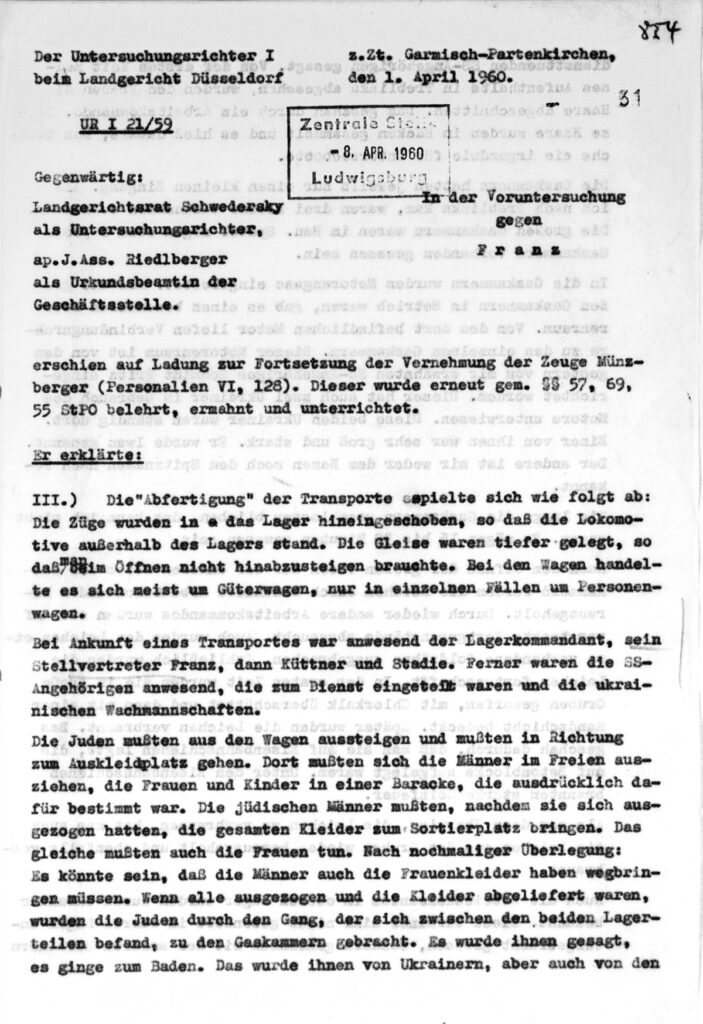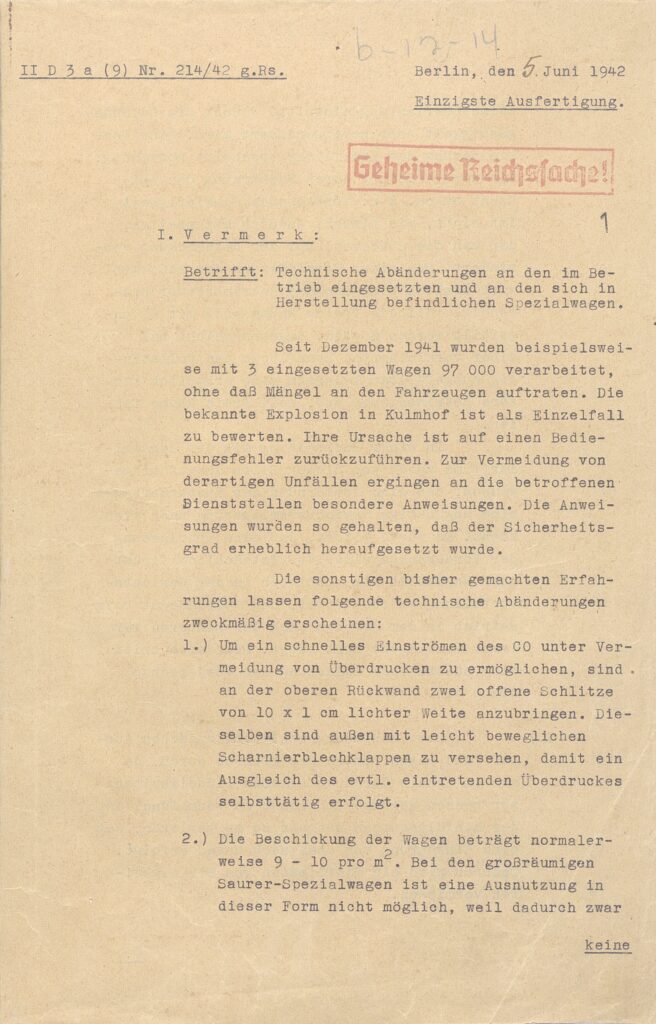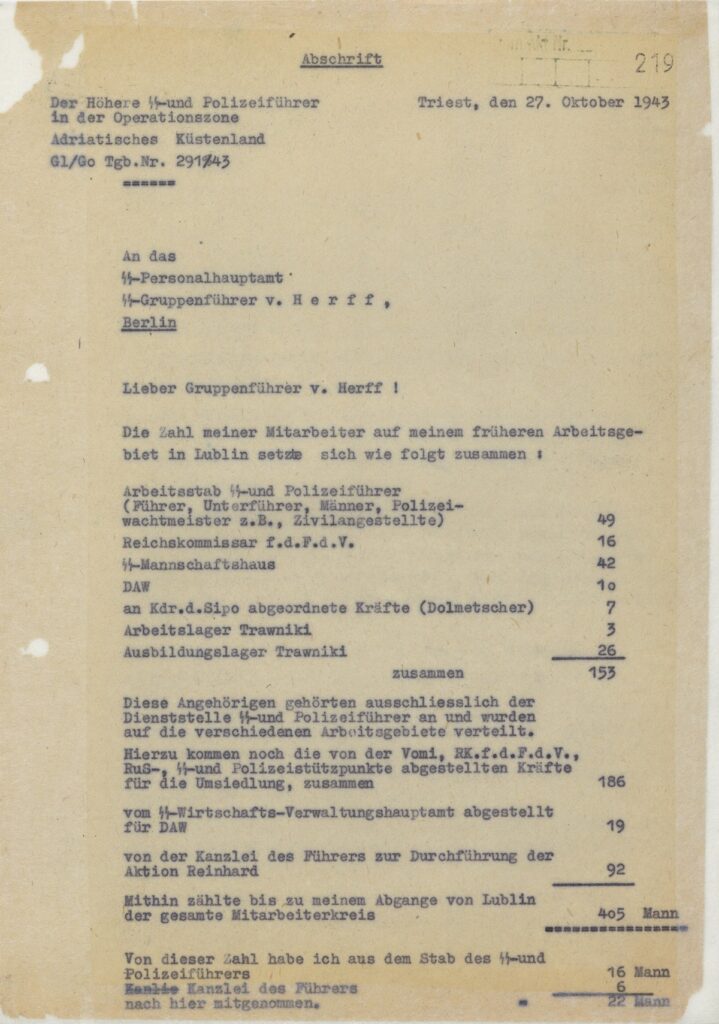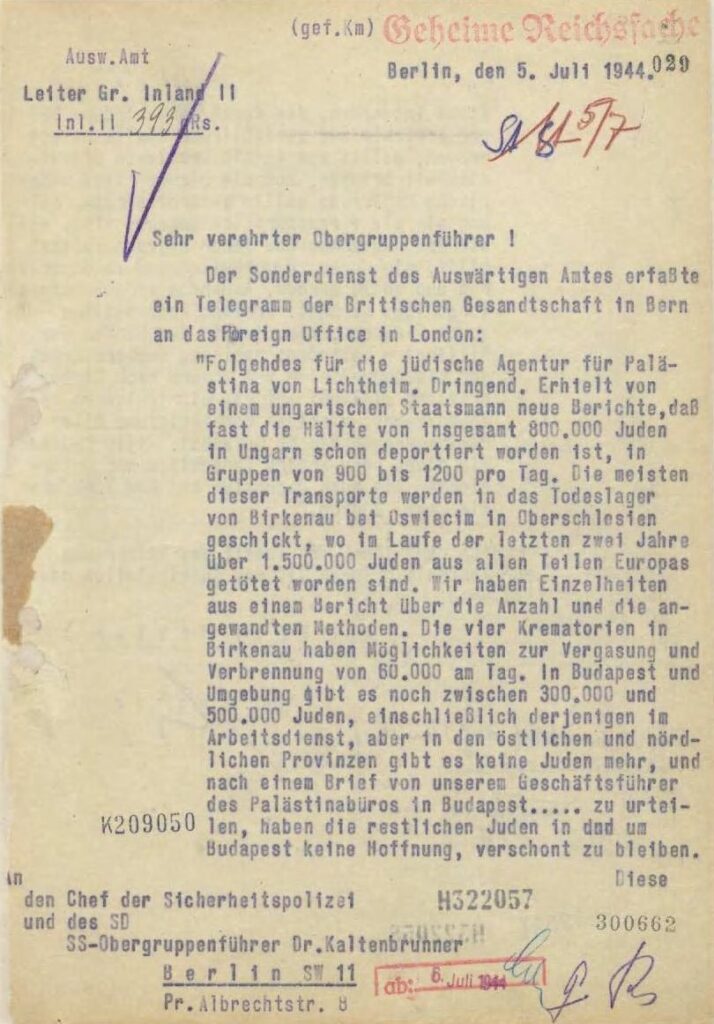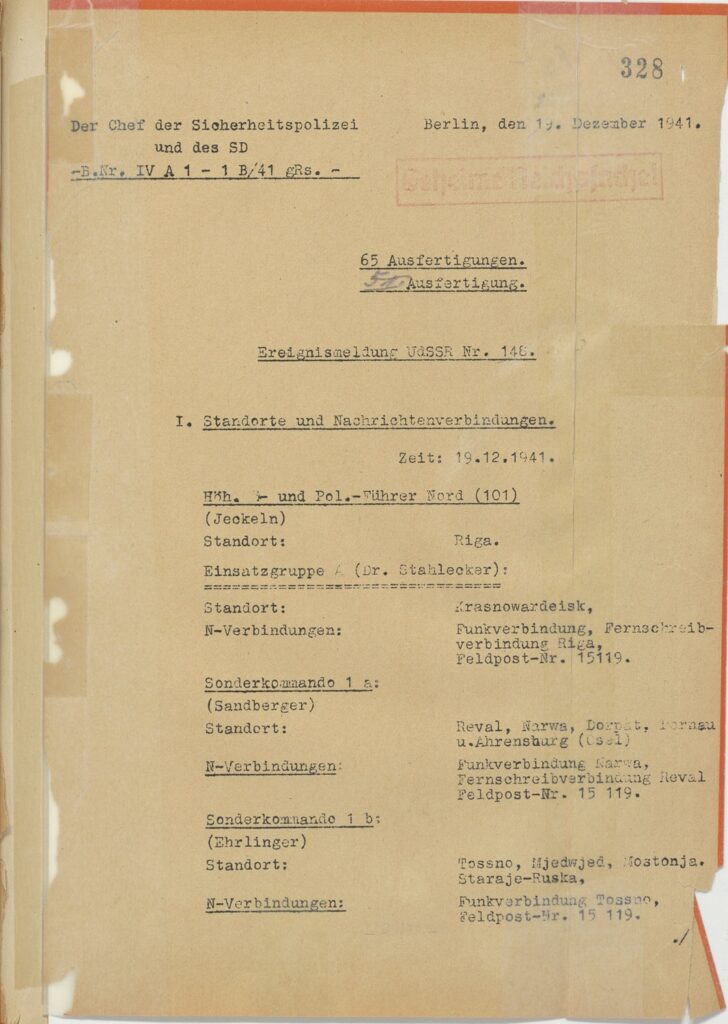1960-03-31 / Testimony of SS Guard Gustav Münzberger on Treblinka Extermination Camp
Interrogation transcript of former Treblinka extermination camp guard SS-Unterscharführer Gustav Münzberger, dated March 31 and April 1, 1960. In his testimony, Münzberger describes the arrival of prisoner transports, the systematic deception used to lead victims to their deaths, the operation of gas chambers powered by engine exhaust and the later cremation of the bodies as part of efforts to erase evidence of the mass killings. Münzberger names key SS personell and Ukrainian auxiliaries involved in the extermination process.
